In my last post I discussed the OVF import process, so after some hands on experience with the SearchMyVM appliance, I'm ready to give my impressions.
Let me apologize in advance for where I have edited the screenshots. I have removed anywhere that it referenced our server names or IP addresses.
Starting with initial bootup you are presented with a text based menu to setup your network configuration
After confirming your IP information, your DNS, and an NTP server you are directed to connect to the IP address of the server where you are presented with a "google-like" screen that presents you with some sample queries.
First you will need to point to your Virtual Center. You will need to use the FQDN for your server, and provide a user id that has the ability to read objects.
So now it SearchMyVM will index your VMware Environment. In our environment it only took about 15 minutes until all the information showed up. You may receive incomplete query responses until the index is built.
So If you need a function that is not on the common list there is a visual query editor that allows you to build simple or complex queries from a series of drop down lists. They fully explain all objects, including the type of parameter
Additionally if you would like to read additional information about each parameter you can access the detailed help files from the main interface screen.
The results returned are static, you can't click on them or export them from within the interface (although there are some PowerShell techniques for exporting web data)
In summation, here's my impressions of the appliance.
Key strengths :
- Extremely easy configuration. You can have this appliance up and running within 15 minutes.
- Support for the OVF format. This cuts down the provisioning time dramatically.
- Fast Indexing - Our indexing appeared to cover 500 guests and 25 hosts within 15 minutes of connecting to virtual center. Although I was only searching for base objects like virtual machines and hosts at that time, other objects like VMware Tools status may have taken longer.
- Very well written help files and examples - I don't see any written documentation available on their website yet, but the help files contained within the appliance are more than enough to get started.
Thing I would like to see in future releases:
- The ability to export query results to remote shares. Being able to view query results is good, but being able to *use* query results would make this product a must have.
- The ability to drill down into search results. Search results are currently static.
- Plain English queries. Currently the query format is very structured, it would be nice to be able to use commands like "show vms with attached cdrom".
- Support for SCVMM and XenCenter.
Vkernel has setup up a section of their forum for discussing the product at http://www.vkernel.com/forum/viewtopic.php?t=120 . If you would like to contribute, you will need to register with their forum. I will be watching future releases of the appliance as it appears to have potential, especially for large environments that lack PowerShell scripting talent.
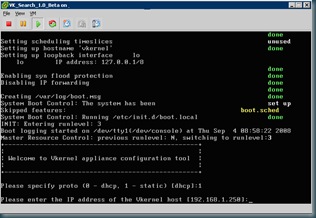


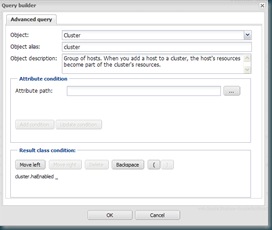
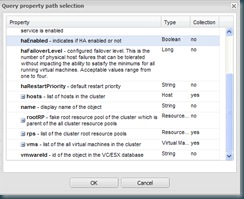
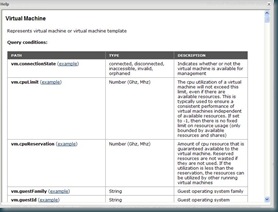
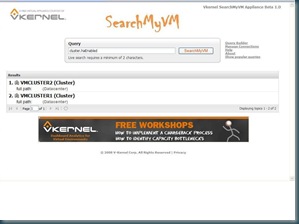




No comments:
Post a Comment